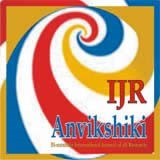Research Paper

RISK FACTOR AND MANAGEMENT OF RECTAL PROLAPSE (GUDBHRAMSA) IN CHILDHOOD PERIOD
Author: VARSHA SAXENA* AND NIRAJ SRIVASTAVA**, ,
*Research Scholar, Department of ShalyaTantra, FOAy [IMS] BHU. Varanasi (U.P.) India. e-Mail : nirajimsbhu@gmail.com
**Assistant Professor & Reserch Scholar, Department of Kaumarbhritya/ Balroga [IMS] BHU. Varanasi (U.P.) India. e-Mail : nirajimsbhu@gmail.com
Download PDF
Abstract
Rectal prolapse or procidentia, is a bulging of all layers of the rectal wall through the anal canal to the external environment. It was first described in Ebers Papyrus as early as 1500 BC and is a condition that is most common in children under 2 years and the elderly. In children the condition most often involves only the mucosa and is therefore referred to as partial prolapse, which frequently draws back spontaneously. In children it is associated with a variety of diseases such as diarrheal disease, ulcerative colitis, chronic constipation, malnutrition, Hirschsprung’s disease, meningomyelocele, pertussis,rectal polyps,and surgical repair of anorectal anomalies. Treatment of the associated diseases usually resolves the problem. The prognosis generally is good with appropriate treatment. Spontaneous resolution usually occurs in children. Patients with rectal prolapse who are aged 9 months to 3 years, 90% will need only conservative treatment.No optimal or standard procedure for treatment of rectal prolapse in children exists. It is usually managed conservatively by avoiding excessive straining at defaecation, avoidance of squatting position, proper bowel training and eliminating precipitating factors like diarrhea, polyps, constipation etc. In Ayurveda Sushruta has described Gudbhramsa under the heading of Kshudraroga butCaraka has described Gudbhramsa in the chapter of Vamanavirechanavyapat in Siddhi sthana as a
complication of samsodhanachikitsa by the name of Vibhramsa. AcharyaVagbhatta has described Gudbhransa in the context of Atisarachikitsa.
Key words
;
Rectal prolapse; children; Risk factors; Ayurveda